 Greater Rhea
Greater RheaRange: lowlands to 2000 meters of southcentral South America (Bolivia, Paraguay, Brazil, Uruguay, Argentina)
Habitat: grassy plains, open brush
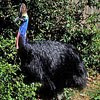 Double-wattled Cassowary
Double-wattled CassowaryRange: lowlands and mountains to 3300 meters of australian region (New Guinea, Aru Is., northeastern Australia)
Habitat: humid forest, edge, especially near streams
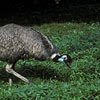 Emu
EmuRange: Australia
Habitat: plains, scrub, open woodland, coastal heath, alpine pastures, semi-desert
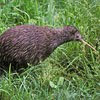 Brown Kiwi
Brown KiwiRange: New Zealand
Habitat: forest, scrub, overgrown farmland
 Elegant Crested-Tinamou
Elegant Crested-TinamouRange: Argentina and Chile
Habitat: dry savanna, open woodland, dry steppes
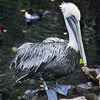 Brown Pelican
Brown PelicanNow common in coastal areas of the southern United States, the fish-eating brown pelican was decimated by pesticide poisoning in the 1960s.
Range: coasts of americas (California to Ecuador and Maryland to Venezuela)
Habitat: seacoasts, estuaries, bays, islands
 Double-crested Cormorant
Double-crested CormorantA fish-eating bird, the double-crested cormorant needs to dry its wings after swimming since it lacks the waterproof oil that most waterbirds protect their feathers with.
Range: North America
Habitat: lakes, rivers, swamps, seacoasts
 Cattle Egret
Cattle EgretCommon in Africa, and recently colonizing North America, the aptly-named cattle egret follows livestock.
Range: Worldwide, except polar regions
Habitat: wet fields, marshes, swamps, pastures, grassland, often associated with grazing large animals
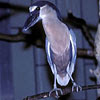 Boat-billed Heron
Boat-billed HeronRange: Mexico to northern Argentina
Habitat: ponds and streams in humid forest, marshes, mangroves
 Little blue Heron
Little blue HeronYoung Little Blue Herons are completely white, resembling an egret, but molt into their more familiar blue and purple adult feathers.
Range: Northern United States to Uruguay
Habitat: marshes, ponds, lakes, meadows, streams, mangroves




No comments:
Post a Comment